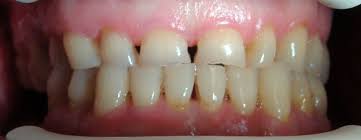Amalgam and composite are the two most commonly used materials for minor restoration of damaged teeth in today’s dentistry. Each of these materials has its own development, success, adventages and disadventages. Amalgams have been used in dentistry for over 150 years as a material for the restoration of lost tooth structure. It is the alloy composed of silver and mercury which … are enriched by copper, and other metals. Their main adventage is low price, high resistancy to mechanical pressure and long duration of fillings, especially on the poserior teeth. The main disadvantages are poor aesthetic value, appearance of corosis on the filling edges and the emergance of secondary caries around the filling.
Concerning the toxicity of amalgam, the oppinions are still oposed. In the USA and many European countries where amalgam fillings are used, amalgam is considered completely safe. In 2007, Norway strictly banned the use of amalgam due to its mercury component which is extremely toxic.
Composites are materials that were introduced in dental practice in the mid 20th century and with the many improvements that have arisen from the development of industrial technology, today they represent one of the highest quality materials used in dental restoration. Their biggest advantage over amalgam is high aesthetics that is obtained in composite teeth, where they can almos completely imitate the natural appearance of the tooth. In addition, far less tooth substance is removed, and the bond between a tooth and a compositeis is very strong because it is based on adhesion.

The main disadvantages of composites, such as lowe resistance to abrasion and mechanical stress and the occurrence of shrinkage during polymerization, are now reduced to a minimum by changing the composition of the material and the use of ceramic fillers.
Composite materials are modern materials of exceptional aesthetic characteristics which is why they are very popular with patients. Requirements for more and more beautiful appearance of the teeth completelyl exclude the application of the so-called ’black, gray’ fillings.


